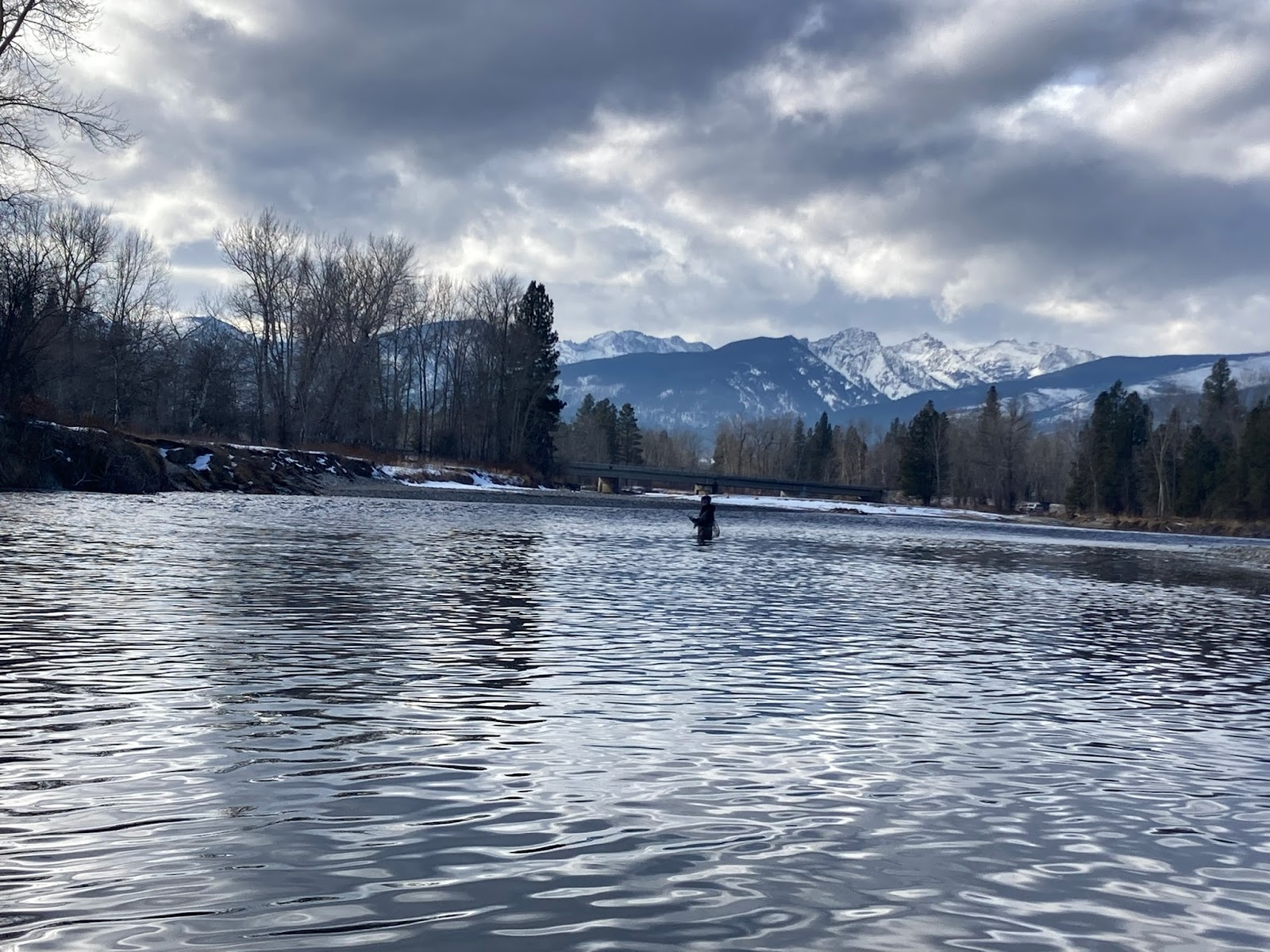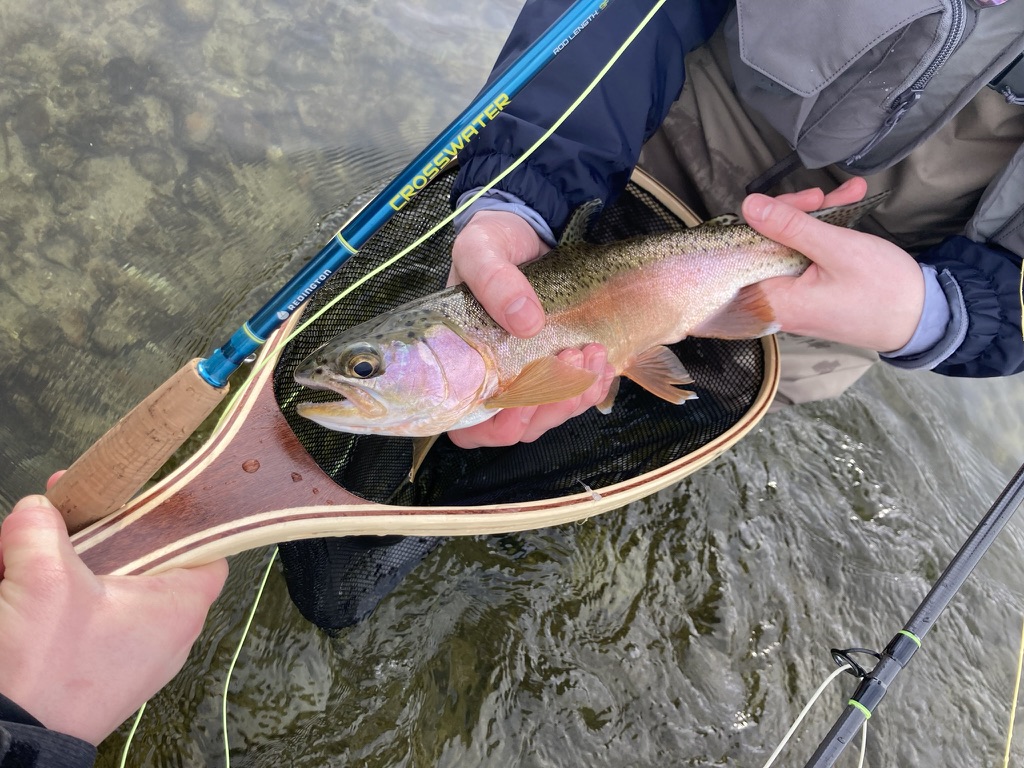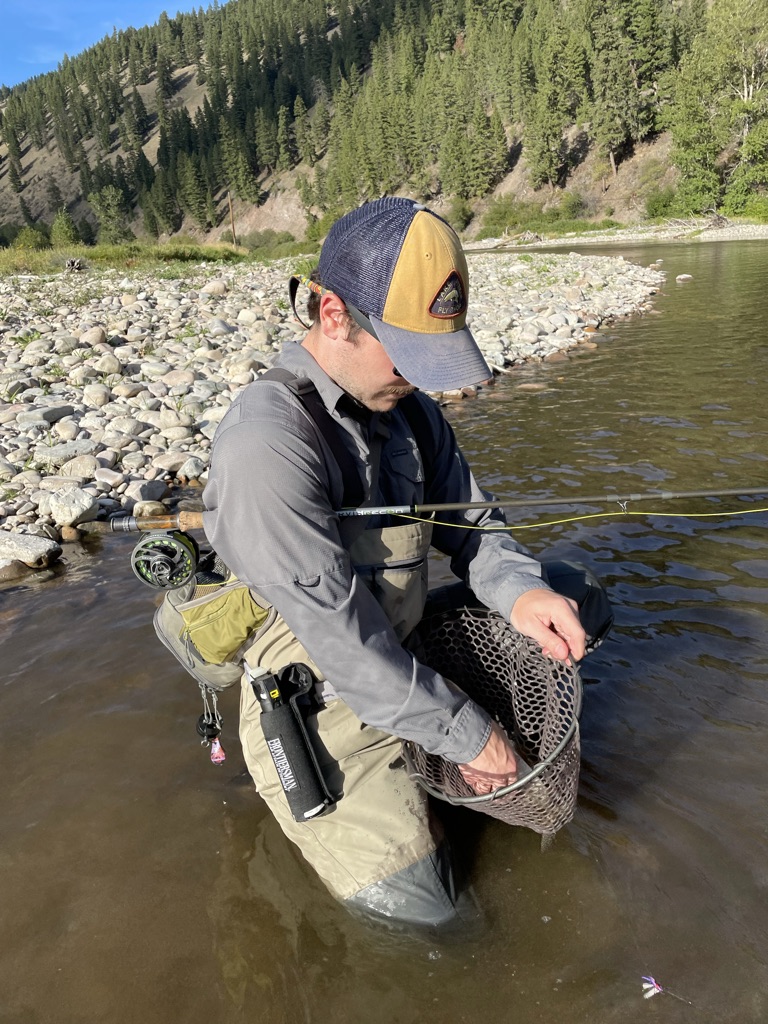When most people think of fly fishing, they only think of fishing on top of the water. The exhilarating rush of a trout rising from the depths like Jaws, slamming a finely detailed dry fly on the surface. For the so-called “dry fly purist”, this is the only way to target fish with a fly rod. For those of us who are interested in actually catching fish, fishing below the surface is a perfectly viable option and often a more successful one. Wet fly fishing with nymphs may not be as romantic as fishing with dry flies, but using a bobber gets the job done just the same. It is a tactic that in some ways requires more research but can also lead to higher reward and overall understanding of the aquatic life cycle.
Top 5 Tips for Fly Fishing with Nymphs
1. Use an Efficient Wet Fly Set-Up
2. Cast to Avoid Tangles
3. Adjust to the Appropriate Depth
4. Cover the Water
5. Mend the Line
Tip One: Use an Efficient Wet Fly Set-Up
There is an abundance of ways to gear up a nymph rig, and with more time on the water, it is likely you will develop your own individual preference. For instructional purposes, I am going to go over my personal nymphing set-up and explain why it works for me.
For targeting trout species, I will either use a 9ft or even a 10ft rod in the 5wt category. 10ft is my personal favorite for nymphing, as it helps me cast and mend a bit more efficiently with the slightly added length.
Using floating line, I will attach a 9ft tapered leader – typically in 4x strength for targeting most trout. I find the end of tapered leader a bit too fine for my liking, and I will sometimes cut off nearly a foot for peace of mind (NOT REQUIRED).
At the end of my leader, I will tie on my first nymph. One nymph is a perfectly fine option, and this may help avoid tangles when casting. Adding two nymphs is a very effective alternative. I typically add two nymphs, as I believe an added fly will increase my catch opportunities, and the extra weight allows these nymphs to sink quicker to target the trout. I like to start with a larger fly as my initial nymph, and a smaller fly as my secondary nymph.
To add a secondary nymph, I use a cinch knot to tie added tippet to the hook of my first nymph. This begins as a loop that I place over my hook.
Next step is to turn the tippet 5 times, then push the guide end of the tippet back through the initial loop on the hook.
Final step is to hold tension to the bug and the guide end of the tippet with one hand, pulling the rest of the tippet to secure the knot with your other hand. I will often wet the line with my tongue, so friction doesn’t disrupt the completion of the knot.
After this step, tie the secondary nymph to the end of your tippet. I like to have around 18in length between my lead fly and my secondary fly.
Depending on the flow of the water I am fishing, I will add split shot to ensure my nymphs make it to the lower water column. The best way to add split shot is to start with a single bead, then continue to add more as you probe to reach the bottom of the stream. I usually prefer to use Size 1, and to add as necessary. Split shot is added above the first nymph and can be applied at various lengths. Common places to add split shot are 8in above the first nymph, to stray line remaining after adding additional tippet to pre-existing leader, or above a swivel/tippet ring. Adding weight can be as simple or as complicated as desired, but it should be added in a way that does not result in an abundance of tangles (SEE TIP TWO).
Lastly, adding the bobber, or strike indicator as it is tenderly referred to in the fly fishing community. I prefer to use twist on strike indicators that are easily adjusted, and generally stay firmly in place. Strike indicators are adjusted for depth and should be attached at one and a half times the depth of the zone you plan to fish. I judge this distance off my lead fly. A trick I like to use is to let my lead fly sink to my feet where I am wading. Using this, I estimate how much deeper the water will be where I am fishing and use the “one and a half” distance rule in order to determine my bobber placement.
Tip Two: Cast to Avoid Tangles
Tangles and nymph fishing tend to go hand in hand. With all the extra materials added to the line, throw in a little wind and poor mechanics and massive tangles are sure to form almost instantaneously. Casting with unevenly dispersed weight is a far less delicate version of the single dry fly cast, and it is notably less intuitive. Although practice using a nymph rig is the best cure for tangle situations, here are a few tricks that may ease some of the difficulty that comes with using a new tactic.
1. Do not cast past your limit. Try to cast to an attainable distance and work your way to reach further distances. Forcing a long distance cast often leads to mistakes and closes your casting loop. Open loops are key for casting with heavy nymph rigs to avoid tangles.
2. Avoid halting cast momentum. When line abruptly stops mid cast, it increases the chances of your flies interacting with the split shot and/or bobber. If you get a hit on your strike indicator and commit a false set, just ease into another back cast. Smooth action leads to smooth results.
3. Cast forcefully when encountering wind and elements. Heavier nymph set-ups can beat the wind, unlike lighter dry flies. Maintain a smooth cast, but do not let the forces of nature bully you. Use your dominant elbow and the hand on your line to deliver the power needed to complete a cast with intent.
4. If you keep getting tangled with a full set-up, make adjustments to dumb it down. This can mean reducing split shot, fishing with a single nymph, or simply using a large dry fly and adding a nymph below, eliminating the bobber. Sometimes it is necessary to reduce gear, and practice fundamentals until you are confident enough to cast a fully loaded heavy nymph rig.
Tip Three: Adjust to the Appropriate Depth
Trout tend to hunt for the most available food source, and often the most attainable food source is at the rivers floor. I am going to avoid a full-on biology lesson for now and try my best to keep it simple; trout like to feed near the bottom of the water column. Nymphs primarily exist in this lower section of the river, so you will need to get your wet flies down as close to the floor of the stream as possible.
When wet flies reach the bottom of the river, they will bounce and slide across rocks, boulders, or any other type of material presiding in the area. This will result in your strike indicator slightly bobbing and shifting as it drifts across the water. The frustrating nature of fishing with wet flies is that they often get snagged and stuck on underwater obstacles: Believe it or not, this is a good sign! This means that your nymphs are in the correct place, navigating across the bottom of the stream. If you are not getting snagged at all, or catching any fish, this can be an indication that you are simply not deep enough. Make a small adjustment to your bobber (I usually will add around a foot or so) and try again. Continue this process until you are confident that you are at the bottom, or if you begin to catch trout.
When your bobber drops, SET THE HOOK. This is going to inevitably result in snags but will also result in caught fish. Too often have I hesitated on a hook set because I am afraid it will result in a snag. Snags are inevitable with nymph fishing, and they should not prevent the angler from taking risks to catch fish. Another strategy I like to use while nymphing is to cast above drop-offs. This requires snagging risk as well; I cast to very shallow sections of water above the drop off which are prone to grabbing flies. If I were to cast directly to the pool, I would minimize snagging risk, but I would also miss the holding lie that is directly below the shelf. Being willing to cast to challenging sections can result in great results if one is willing to bear the risks associated with nymphing.
Tip Four: Cover the Water
A classic wet fly strategy is simply covering all the water. When approaching a promising run, it is helpful to start at the bottom of the section, and to slowly work your way up. Before immediately charging into the river to wade, it is essential to consider the water directly in front of you. Occasionally trout are caught in the shallows, depending on time of year and food availability. Practice by starting your casts nearest to the bank, working each consecutive cast further across the water. Once an entire section is covered, you will have a chance to take a few steps upstream and attack the next section.
As we covered in Tip Three, adjusting your strike indicator is key, especially when reaching deeper sections of the river. If needed, more split shot can also be added to assist your nymphs in reach the lower water column.
Making constant adjustments is mandatory in order to cover the entire section confidently without leaving favorable holding lies unaccounted for. Some holding lies are more obvious than others, but it is worth testing a variety of water in order to initiate a response.
Tip Five: Mend the Line
Similarly to fishing with dry flies, mending the line is a very important aspect of indicator fishing with nymphs. As the wet flies travel below the surface, they need to be presented in a complete dead drift. Natural nymphs do not have swimming capability and will either crawl across the rocks at the bottom of the river or be pulled into the swift current, floating helplessly. Any sort of drag from the nymph looks unnatural to an approaching trout, causing the fish to intentionally avoid consuming the suspicious material. This makes mending paramount in order to create the perfect drift in order to fool trout.
Mending with a nymph set-up does not need to be as painstakingly cautious as mending with dry flies. Because the fish we are targeting reside at the bottom of the water column, they are not as sensitive to unusual activity on the surface. They are looking to the rocks for food source, not at the ceiling of their limitations. This allows the angler to perfect their mend and readjust it multiple times to make it as ideal as possible. Fishing with wet flies is a great way to practice mending for the novice, as it is more forgivable than other methods.
When mending, lift the tip of the rod slightly, feeding small amounts of line back through with your retrieving hand, and turn your line upstream. This should create slack on the water in a snake-like pattern. If faced with different speeds of current, more adjustments will be required. Continue to adjust until the line on the water is slack enough to create a dead drift, but maintained enough that a proper set can be accomplished.
Conclusion
I started fly fishing with dry flies only and began my transition to wet flies while living in Bozeman, Montana. At first, I was overwhelmed with the idea of fishing with nymphs. It seemed like a complicated process and an alien concept compared to fishing with a single dry fly. After reluctantly performing research and acquiring the necessary gear, I was eventually ready to hit the water. What I found is that my catch rates doubled almost instantly, and I now had a much better understanding of trout habits and aquatic insects. Now, after some time applying this tactic to the water, I am convinced that nymphing is a fantastic way for fly fishers of all levels to improve their game, and to intimately learn the ecosystem that allows this sport to exist. With the tips I have listed above, I hope to create a starting point for anyone looking to try an alternative genre of fly fishing that consistently proves its effectiveness.


















.webp)























